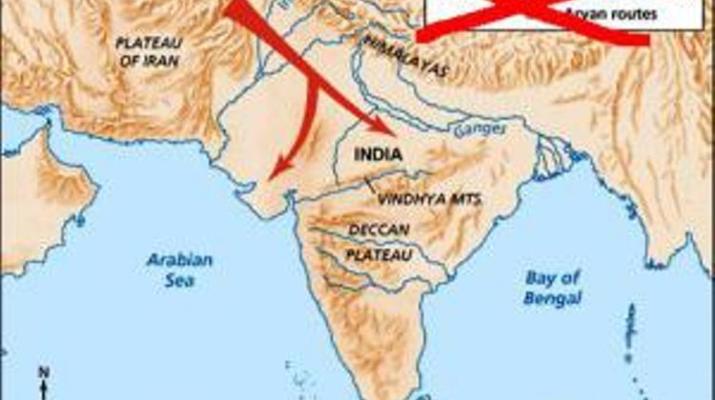In a big blow to the historians still reeling from a colonial hangover, a recent DNA study of skeletal remains in Rakhigarhi has found no Central Asian traces. According to a report in Economic Times, Vasant Shinde and Neeraj Rai, the lead researchers of the study have stated that this establishes the Vedic era was guided and founded by totally indigenous people with limited external contact.
Rakhigarhi is one of the biggest Harappan civilisation sites discovered so far and is spread across 300 hectares near Hisar in Haryana. The remains are believed to be 6000 years old. The lead researchers stated that apart from the lack of any Central Asian element in the DNA study of the skeletal remains, there was also no sign of violence or warfare.
“The Rakhigarhi human DNA clearly shows a predominant local element — the mitochondrial DNA is very strong in it. There is some minor foreign element which shows some mixing up with a foreign population, but the DNA is clearly local,” Shinde said. He went on to add: “This indicates quite clearly, through archeological data, that the Vedic era that followed was a fully indigenous period with some external contact.”
Most recently, the discovery of chariots at an excavated site in Sanauli put into question one of the basic assumptions the Aryan Invasion Theory relies upon- that the invaders introduced horses into the subcontinent. It has neither been established nor refuted that the chariots were horse driven, but this discovery coupled with the latest DNA study at Rakhigarhi seriously put into question the credibility of the theory in its entirety.
The Aryan Invasion Theory asserted that Vedic culture and practices were of a foreign origin, which was supposedly enforced upon the indigenous populations of the Indian subcontinent by a fairer or light skinned group of people that invaded the mainland and pushed the local population down south. The theory was promoted to help the British suppress Indian nativist ideology or a sense of common identity, further assisting them in their larger ‘divide and rule‘ policy. The same theory has been promulgated by several historians from India, who have labelled Vedic practices as a foreign introduction into the Indian subcontinent. The latest findings are a huge blow to the Aryan Invasion Theory and suggest that Vedic practices evolved more less from local indigenous people rather than a ‘foreign invading tribe’.
The theory has also been used in modern times by political parties in southern India to create a North vs South divide, referring to the apparent original inhabitants of the land as Dravidians and the foreign North Indians as Aryans. This had helped parties like DMK and AIADMK in furthering their xenophobic and regionalist political rhetoric in the decades following Independence.
Nonetheless, while the Aryan Invasion Theory can be put to rest, the study still hasn’t answered the larger question of what exactly happened to the Indus Valley Civilisation. Lack of damage to buildings, skeletons and archaelogical sites indicate that war was not the cause of the displacement of population.
“The condition of the human skeletons, the burial…all show absence of palaeo-pathology symptoms which could indicate ailments due to lack of medical care. The persons here were healthy; denture morphology showed teeth free of any infection; bones are healthy, as is the cranium,” Rai said.
One of the suggested theories is that there was a shift in the course of the Indus river, which made agriculture and livelihood difficult in the basin area. However, the fact that almost all personal and household items, including food grains were abandoned as the population migrated still poses relatively unanswered questions as to the fate of the Indus Valley Civilisation.
